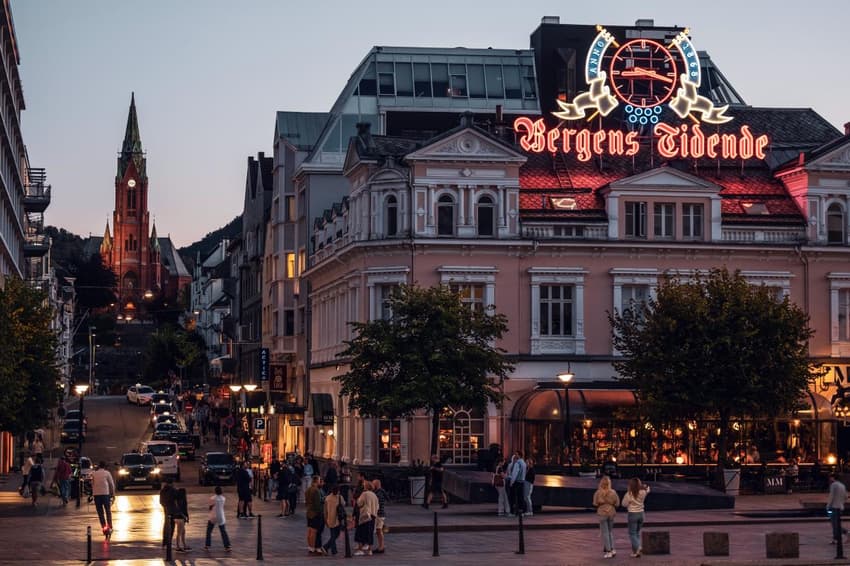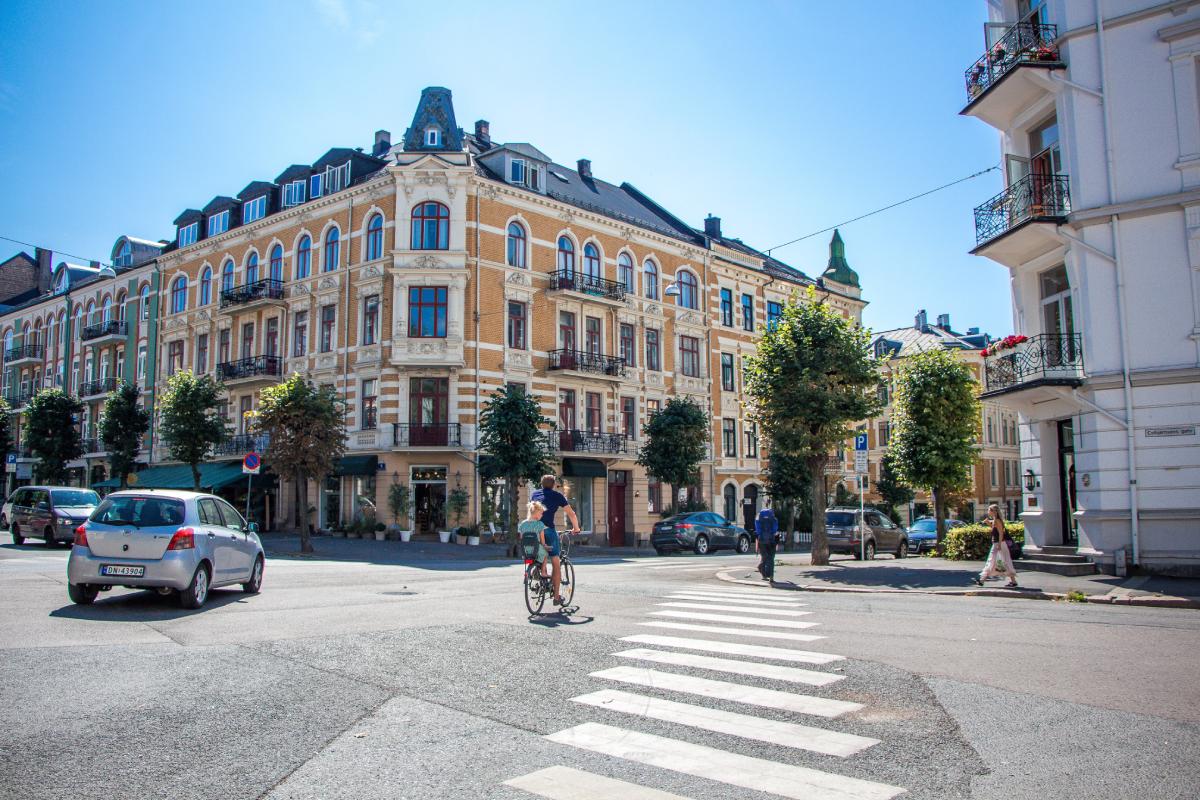What are locals in Norway's different regions called?

Norway boasts distinct names for its inhabitants based on their native regions and cities. From the Arctic north to the southern coastline, many parts of the nation have their own monikers.
Norway, a land of rugged coastlines and shimmering fjords, is as diverse in its culture as it is in its landscapes.
Each city, town, and region holds a deep sense of identity constructed over centuries. And integral to this identity are the names by which the inhabitants are known.
These names are more than mere labels; they enclose stories, histories, and traditions, at times even allowing a sneak peek into the character of each region and city.
Join us on this enlightening journey as we traverse the numerous regions and localities of Norway, all the while unveiling the distinctive monikers associated with them and the tales they tell.
Regional designations and the tales they tell
We're starting off in northern Norway. An inhabitant of the region is often called a Nordlending (plural form: Nordlendinger).
The name usually refers to the residents of the Arctic region of Norway and is associated with a distinct regional dialect and what is seen as warm hospitality (especially compared to the stereotype of cold and reserved Norwegians).
There is also a special name for an inhabitant of Norway's northernmost region, Finnmark, often called Finnmarking (plural form: Finnmarkinger).
Moving on to central Norway, which is where we find Norway's Trøndelag region, which is home to the Trønder people. The region is steeped in historical significance and is home to the ancient Nidaros Cathedral in Trondheim, which lends its inhabitants a deep-rooted cultural identity.
In the west of the country, known for its world-famous fjords, you'll find people often referred to as Vestlendinger (singular form: Vestlending).
The area encompasses the big cities of Bergen and Stavanger, which also have their own local monikers (more on that later).
Inhabitants of Norway's eastern regions, including the capital of Oslo, are called Østlendinger (singular form: Østlending). This region, being more urbanised than the Norwegian average, has a blend of contemporary Norwegian culture and ancient traditions.
Last but not least, we have southern Norway. The south coast, known for its beautiful archipelago and relatively milder climate, is home to people called Sørlendinger (singular form: Sørlending).
Often associated with a more maritime lifestyle, Sørlendinger get to cherish the summer months when the coast is most lively.

Oslofolk (or "people of Oslo") are usually considered quite cosmopolitan. Photo by Marleen Mulder-Wieske on Unsplash
Local identities and names
While these broader regional designations are quite common, Norway also has a rich tapestry of local identities tied to smaller regions, towns, and even specific islands.
Each (often) comes with its unique cultural nuances, dialects, and traditions.
Some of these monikers are markers of a sense of pride, local identity, and even hints of friendly rivalry.
The capital city of Norway, Oslo, is viewed by many as the heart of the country's contemporary culture. Oslofolk (or "people of Oslo"), Oslokvinne/oslomann (literally translated into "Oslo woman" and "Oslo man"), or collectively Osloenser are usually considered quite cosmopolitan.
Bergen, Norway's second-largest city, is famously known as the gateway to the fjords – but it also has a very strong reputation for boasting a strong local identity.
A Bergenser (plural form: Bergensere) will usually let you know that they're from Bergen as soon as you meet them (or so the running joke goes), and you'll usually be able to spot one based on the distinctive dialect, Bergensk. Similarly, people hailing from Drammen to the west of Oslo, are called Drammensere (singular form: Drammenser).
Folks from Haugesund in Rogaland have an interesting nickname: they're called Arabs. There are a few stories about how this label came about.
One tale tells of a sailor from Haugesund who docked in the Middle East and got robbed of all his clothes. In desperation, he nabbed a local outfit hanging from a clothesline and raced back to his ship. When he tried to board, his crew didn't recognis e him. He had to shout, "I'm not an Arab! I'm from Haugesund!"
Remembering the name for Trondheim residents is easy – as it's the same one used for the central Trøndelag region – Trønder.
In the old Sør-Trøndelag county, you'll find the residents of Budal, whose inhabitants often identify as a Budaling (plural form: Budalinger).
On the other hand, the designation for Stavanger residents is not that intuitive, as residents of Norway's "oil capital" are commonly (and colloquially) called Siddis.
Siddis refers to both the local dialect and the people who proudly hail from Stavanger. The term's first documented use traces back to a 1920s newspaper article. However, it didn't become widely popular until about the 1950s. Most agree that Siddis likely derives from the English word "citizen".
Initially, Siddis was used to describe someone from the heart of Stavanger, specifically within the pre-1965 city limits. Over the years, however, the term has expanded to include folks across the Stavanger municipality.
Additionally, people from Tromsø – the largest city in northern Norway – are called Tromsøværinger (single form: Tromsøværing), folks from Gamvik in Troms og Finnmark are usually referred to as a Gamviking or Gamvikværing, while an inhabitant of Fredrikstad in the Østfold region of southeastern Norway is called a Fredrikstadmann/-kvinne (plural form: Fredrikstadmenn/-kvinner).
All of these designations (and many, many more) designate more than just a one-size-fits-all group identity; they tell stories of the Norwegian regions, cities, and the people who inhabit them – and it's well worth the effort to find out more about them if you're lucky enough to visit (or live in) different parts of Norway.
You can find the full directory of local and regional name designations on the webpage of the Language Council of Norway.
Comments
See Also
Norway, a land of rugged coastlines and shimmering fjords, is as diverse in its culture as it is in its landscapes.
Each city, town, and region holds a deep sense of identity constructed over centuries. And integral to this identity are the names by which the inhabitants are known.
These names are more than mere labels; they enclose stories, histories, and traditions, at times even allowing a sneak peek into the character of each region and city.
Join us on this enlightening journey as we traverse the numerous regions and localities of Norway, all the while unveiling the distinctive monikers associated with them and the tales they tell.
Regional designations and the tales they tell
We're starting off in northern Norway. An inhabitant of the region is often called a Nordlending (plural form: Nordlendinger).
The name usually refers to the residents of the Arctic region of Norway and is associated with a distinct regional dialect and what is seen as warm hospitality (especially compared to the stereotype of cold and reserved Norwegians).
There is also a special name for an inhabitant of Norway's northernmost region, Finnmark, often called Finnmarking (plural form: Finnmarkinger).
Moving on to central Norway, which is where we find Norway's Trøndelag region, which is home to the Trønder people. The region is steeped in historical significance and is home to the ancient Nidaros Cathedral in Trondheim, which lends its inhabitants a deep-rooted cultural identity.
In the west of the country, known for its world-famous fjords, you'll find people often referred to as Vestlendinger (singular form: Vestlending).
The area encompasses the big cities of Bergen and Stavanger, which also have their own local monikers (more on that later).
Inhabitants of Norway's eastern regions, including the capital of Oslo, are called Østlendinger (singular form: Østlending). This region, being more urbanised than the Norwegian average, has a blend of contemporary Norwegian culture and ancient traditions.
Last but not least, we have southern Norway. The south coast, known for its beautiful archipelago and relatively milder climate, is home to people called Sørlendinger (singular form: Sørlending).
Often associated with a more maritime lifestyle, Sørlendinger get to cherish the summer months when the coast is most lively.

Local identities and names
While these broader regional designations are quite common, Norway also has a rich tapestry of local identities tied to smaller regions, towns, and even specific islands.
Each (often) comes with its unique cultural nuances, dialects, and traditions.
Some of these monikers are markers of a sense of pride, local identity, and even hints of friendly rivalry.
The capital city of Norway, Oslo, is viewed by many as the heart of the country's contemporary culture. Oslofolk (or "people of Oslo"), Oslokvinne/oslomann (literally translated into "Oslo woman" and "Oslo man"), or collectively Osloenser are usually considered quite cosmopolitan.
Bergen, Norway's second-largest city, is famously known as the gateway to the fjords – but it also has a very strong reputation for boasting a strong local identity.
A Bergenser (plural form: Bergensere) will usually let you know that they're from Bergen as soon as you meet them (or so the running joke goes), and you'll usually be able to spot one based on the distinctive dialect, Bergensk. Similarly, people hailing from Drammen to the west of Oslo, are called Drammensere (singular form: Drammenser).
Folks from Haugesund in Rogaland have an interesting nickname: they're called Arabs. There are a few stories about how this label came about.
One tale tells of a sailor from Haugesund who docked in the Middle East and got robbed of all his clothes. In desperation, he nabbed a local outfit hanging from a clothesline and raced back to his ship. When he tried to board, his crew didn't recognis e him. He had to shout, "I'm not an Arab! I'm from Haugesund!"
Remembering the name for Trondheim residents is easy – as it's the same one used for the central Trøndelag region – Trønder.
In the old Sør-Trøndelag county, you'll find the residents of Budal, whose inhabitants often identify as a Budaling (plural form: Budalinger).
On the other hand, the designation for Stavanger residents is not that intuitive, as residents of Norway's "oil capital" are commonly (and colloquially) called Siddis.
Siddis refers to both the local dialect and the people who proudly hail from Stavanger. The term's first documented use traces back to a 1920s newspaper article. However, it didn't become widely popular until about the 1950s. Most agree that Siddis likely derives from the English word "citizen".
Initially, Siddis was used to describe someone from the heart of Stavanger, specifically within the pre-1965 city limits. Over the years, however, the term has expanded to include folks across the Stavanger municipality.
Additionally, people from Tromsø – the largest city in northern Norway – are called Tromsøværinger (single form: Tromsøværing), folks from Gamvik in Troms og Finnmark are usually referred to as a Gamviking or Gamvikværing, while an inhabitant of Fredrikstad in the Østfold region of southeastern Norway is called a Fredrikstadmann/-kvinne (plural form: Fredrikstadmenn/-kvinner).
All of these designations (and many, many more) designate more than just a one-size-fits-all group identity; they tell stories of the Norwegian regions, cities, and the people who inhabit them – and it's well worth the effort to find out more about them if you're lucky enough to visit (or live in) different parts of Norway.
You can find the full directory of local and regional name designations on the webpage of the Language Council of Norway.
Join the conversation in our comments section below. Share your own views and experience and if you have a question or suggestion for our journalists then email us at [email protected].
Please keep comments civil, constructive and on topic – and make sure to read our terms of use before getting involved.
Please log in here to leave a comment.